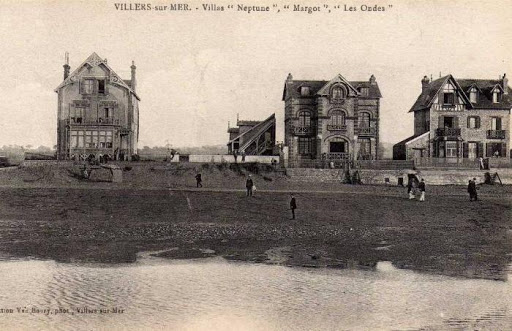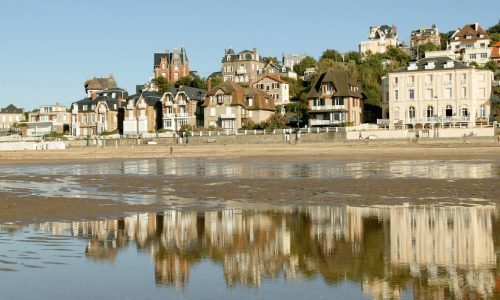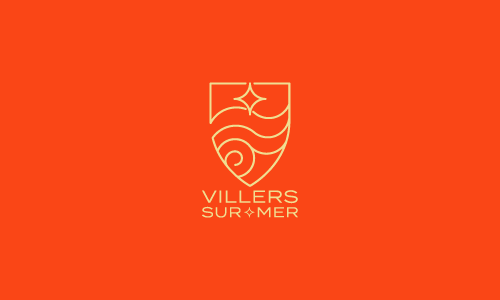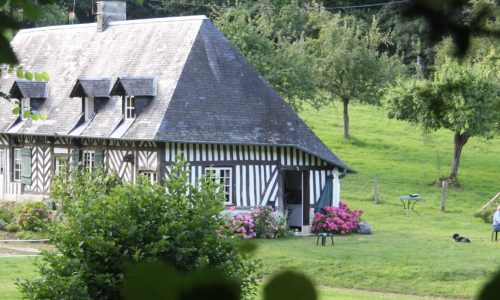Villers-sur-Mer, from prehistory to current times
From prehistory to the Middle Ages
The Vaches Noires cliffs still testify to the history of Villers-sur-Mer and its region: fossils of several dinosaurs, reptiles and other molluscs of the Jurassic period can be seen at the Paléospace museum.
The remnants of a Roman road and several fragments of pieces of pottery and Gallo-Roman pipes are a proof of the existence of a Roman settlement.
In the Middle Ages, Villers-sur-Mer, known as “Sanctus Martinus de Villaribus”, then as “Villare Supra Mare”, was one of the largest towns of the region.
From modern times to the 19th century
In the 18th century, the village started to host several farms – some of which still exist -, and a castle, now classified as a historic monument, was built on the heights of the city. It was a quite impressive change in the urban structure.
The rediscovery of Villers-sur-Mer in the 19th century was due to the interest of artists in the 1840s
Painters Paul Huet and Constant Troyon, as well as writer Alphonse Karr, regularly came to Villers-sur-Mer.
From 1852 to 1900, the city thrived with the advent of sea baths, the development of the railway lines, but above all, the construction of dozens of extravagant villas that you can discover during guided tours.
The Second World War
Villers-sur-Mer was occupied in June 1940 by German troops, who built up defences on the coast as can still be seen today from the presence of several blockhouses. The German army even built a launching pad for “human torpedoes” on the beach of Villers-sur-Mer (at the end of rue de la Mer). Discover more details on this story during the guided tour titled “Villers pendant la guerre” (Villers during the war).
In the surroundings of Villers-sur-Mer
Be captivated by the seaside resorts of Deauville, Cabourg, Honfleur, Trouville-sur-Mer or by the typical Pays d’Auge charm of Beaumont en Auge, Beuvron en Auge or Pont l’Évêque.
Explore historic sites such as: the Pegasus Bridge of Ranville, the batteries of Mont Canisy in Bénerville. Castles like Château du Breuil, Château de Canon or Château de Crèvecœur.
Or even museums such as: Musée Eugène Boudin de Honfleur, Musée Calvados Père Magloire, the Experience and its trades around apples…




